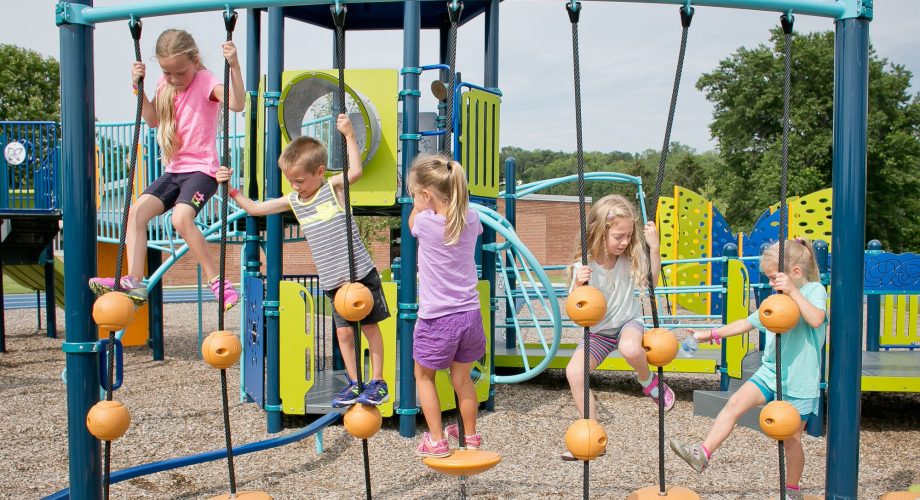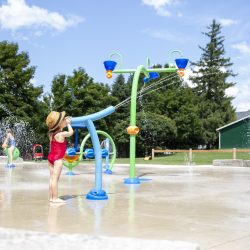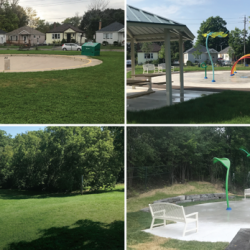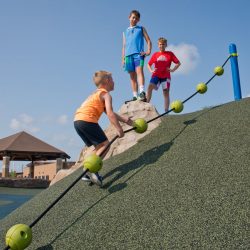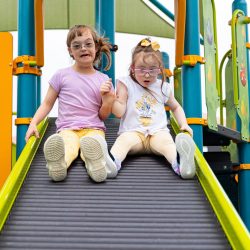5 Tips for Improving Safety at Your Playground
As the owner or manager of a park or playground, your responsibility for preventing playground accidents extends beyond just simply hiring the right inspector and following any recommendations he or she may make. From post-installation inspections to ensuring that children’s attire doesn’t put them at risk, you and your staff team can do a lot to make your outdoor play areas as safe as they can possibly be. We sat down with a a Certified Playground Safety Inspector who shared 5 helpful tips on how to improve safety at your playground.
1. Maintain your protective surfacing
Did you know that in Canada, 80% of injuries on playgrounds are due to falls to the surfacing? Many of these injuries can be prevented through proper maintenance of the playground surfacing. If you have a loosefill surface such as engineered wood fibre, be sure a minimum depth of 300mm (12 inches) of loose material is present at all times. Protective surfacing should be continuously replenished and/or redistributed in high use areas such as at the end of slides, sliding poles or under swings. You can also consider installing wear mats in high use areas to ensure that you always have an adequate amount of surfacing in these areas. If you have a unitary surfacing such as poured-in-place rubber or rubber tiles, make sure to keep these surfaces clean of contaminants. Dirt or other debris can impact their resilience and can adversely affect the manufacturer’s warranty.
2. Watch out for drawstrings
Entanglements are one of the top hazards on playgrounds in Canada. These have occurred on swing top rails, slides and sliding poles either from drawstrings on clothing or foreign objects such as scarves, skipping ropes, bungee cords, dog leashes or lanyards that got caught in or were tied to the playground equipment. Always make sure that children do not have on any loose belts, straps, mitten strings, scarves or drawstrings that could get caught on play equipment. Be sure to speak with parents about this potential safety risk and ask that they remove any strings from children’s jackets, hoodies and other apparel items. Also ensure that children don’t have a house key attached to a lanyard around their neck when playing on the equipment.
3. Remove bike helmets
This seems counter-intuitive because if children wear bike helmets to protect their heads while on their bikes, would it not help them to have the helmet on if they fall off the playground equipment? Not necessarily and in fact, helmets may pose an unforeseen risk. What many people don’t realize is that the openings in play equipment are based on the average size of a child’s head and torso. Openings on a playground are designed to be large enough to allow both the head and body of a child to enter, or small enough that neither the head nor body can enter. When you add the extra dimension of a helmet, the opening may now be too small to allow the head to pass through. Make sure all bike helmets stay with the bikes and both children and parents are educated about this safety rule.
4. Inform with proper signage
Each playspace has a number of signage requirements that help keep your audience informed about who owns the park and also what age each piece of equipment has been designed for. It’s the manufacturer’s responsibility to provide signs with their contact information, the date the equipment was manufactured as well as what age the equipment has been designed for. Ensure that these age signs get posted on the equipment where they will be seen. If you need new or additional signs, contact your sales representative who can assist you.
5. Offer some coverage
Adding shade to your park helps to make it more of a destination area and gives it a community feel. Shade allows not only the caregivers but the children to get out of the hot sun and take a break, have a snack or a drink of water before getting back out to the playground. Consider benches, litter receptacles and other amenities that would encourage visitors to stay awhile longer and keep playing.

